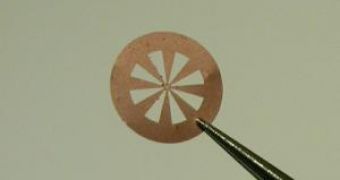Graphene, the material discovered by professor Andre Geim and Dr Kostya Novoselov in 2004, was recently used by researchers from The University of Manchester to make direct measurements on the fundamental constants of the universe. The research conducted by professor Andre Geim, took place at The School of Physics and Astronomy and involved using thin graphene material that absorbs a well known fraction of light, in order to determine the fine structure constant of the universe.
Interactions between fundamental particles in the universe are defined by certain ratios called fundamental constants. An example of such a fundamental constant of the universe would be the ratio between the speed of light in vacuum and the electrical charge of an electron. On the other hand, while some constants are well understood, others are mostly mysterious. Similarly to the fine structure constant, which defines the interactions between fast moving electrical charges and electromagnetic waves, a dimensionless constant is roughly equivalent to 1/137.
"Change this fine tunes number by only a few percent and the life would not be here because nuclear reactions in which carbon is generated from lighter elements in burning stars would be forbidden. No carbon means no life," said professor Gein.
The graphene material developed by Gein, in collaboration with PhD students Rahul Nair and Peter Black, is represented by large suspended membranes of graphene. Carbon monolayers inside these membranes allow light to pass easily through them, meaning that only 2.3 percent of the visible light is being absorbed in the material.
According to physicists, when this number is divided by Pi, it should give the exact values of the fine structure constant, 1/137. In grapheme, electrons behave as if they have lost their mass, which allows us to accurately determine this constant that is so hard to measure through metrological methods. Usually, measuring such values requires highly sophisticated facilities, but with the help of graphene membranes, professor Geim argues that all he needs is a camera to measure the visual transparency of graphene.
"We were absolutely flabbergasted when realized that such a fundamental effect could be measured in such a simple way. One can have a glimpse of the very foundations of our universe just looking through graphene. Graphene continues to surprise beyond the wildest imagination of the early days when we found this material," said Geim.
"It works like a magic wand - whatever property or phenomenon you address with graphene, it brings you back a sheer magic. I was rather pessimistic about graphene-based technologies coming out of research labs any time soon. I have to admit I was wrong. They are coming sooner rather than later," professor Geim added.

 14 DAY TRIAL //
14 DAY TRIAL //